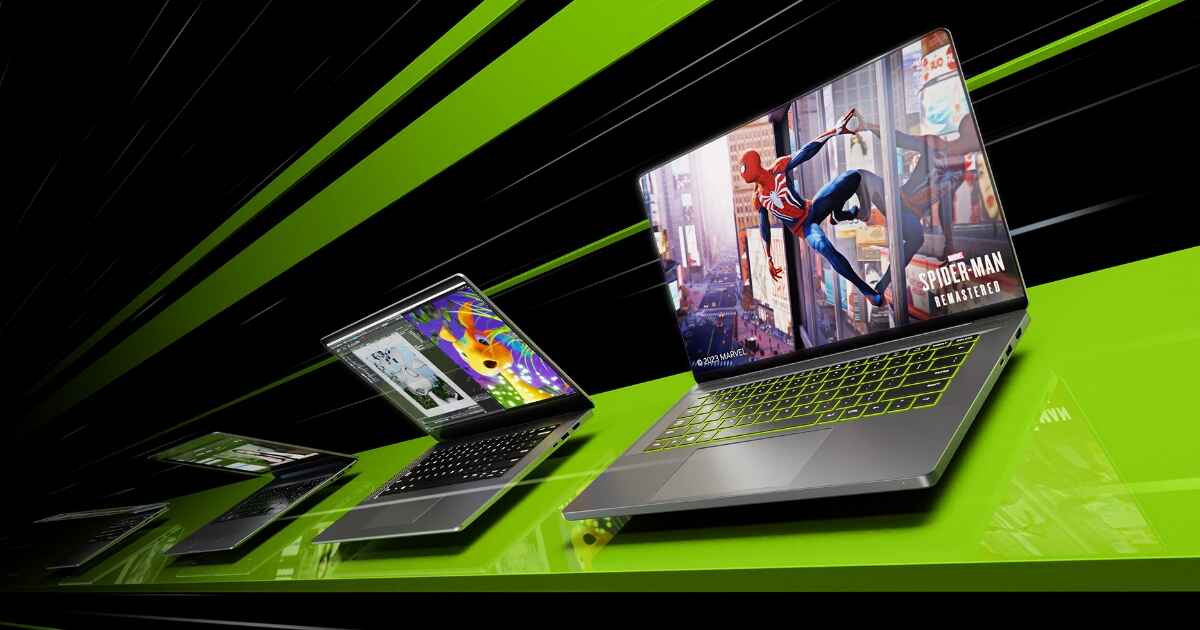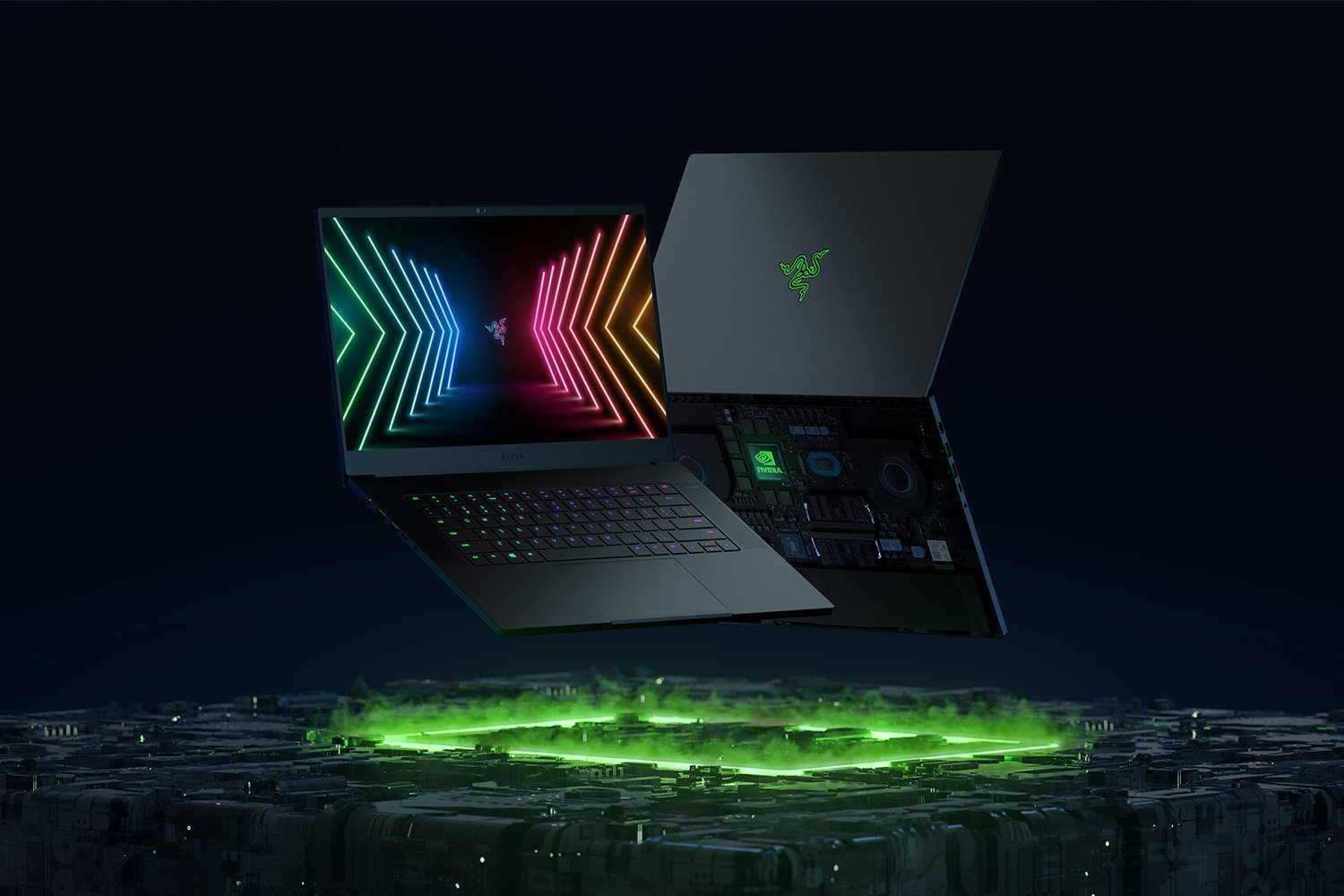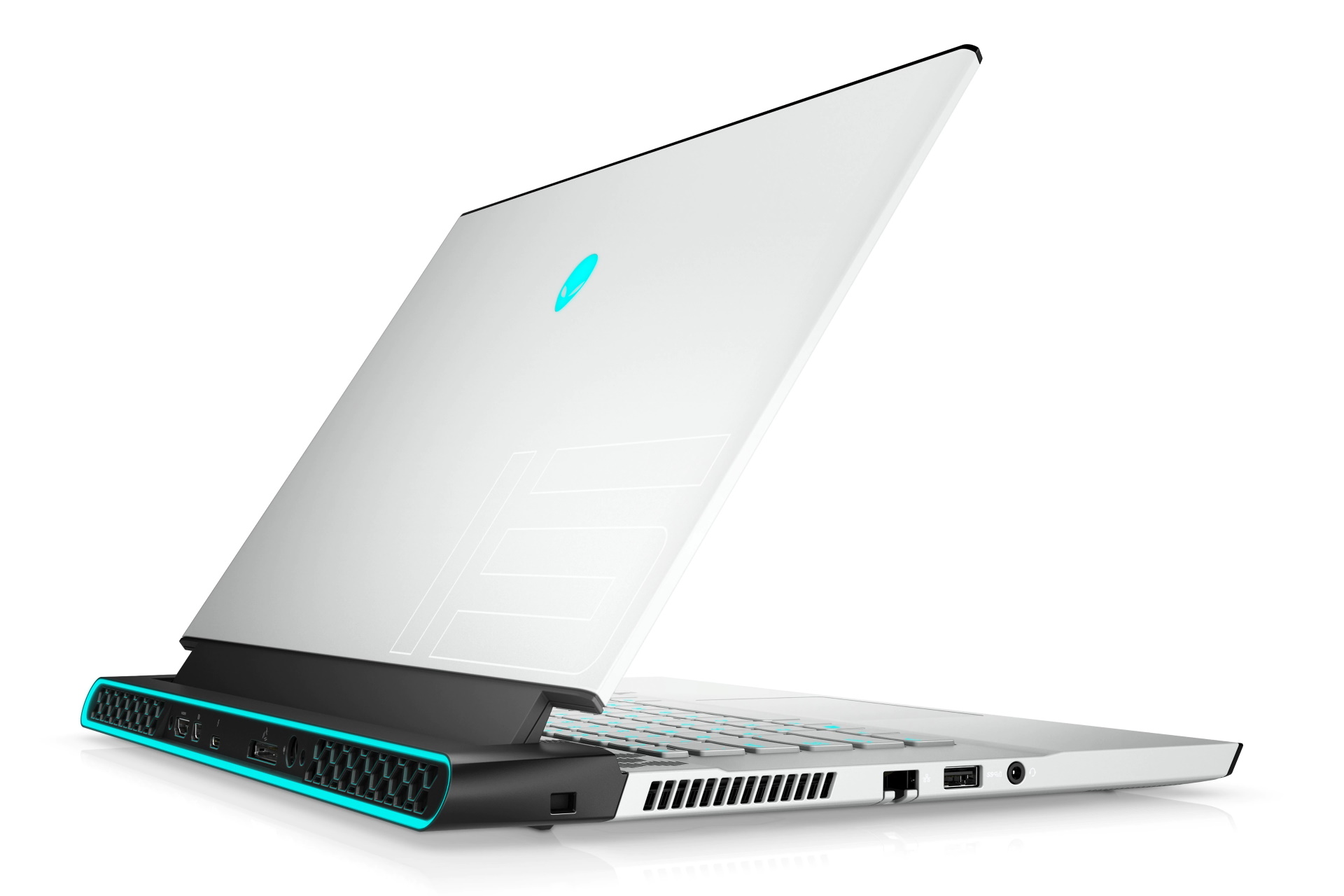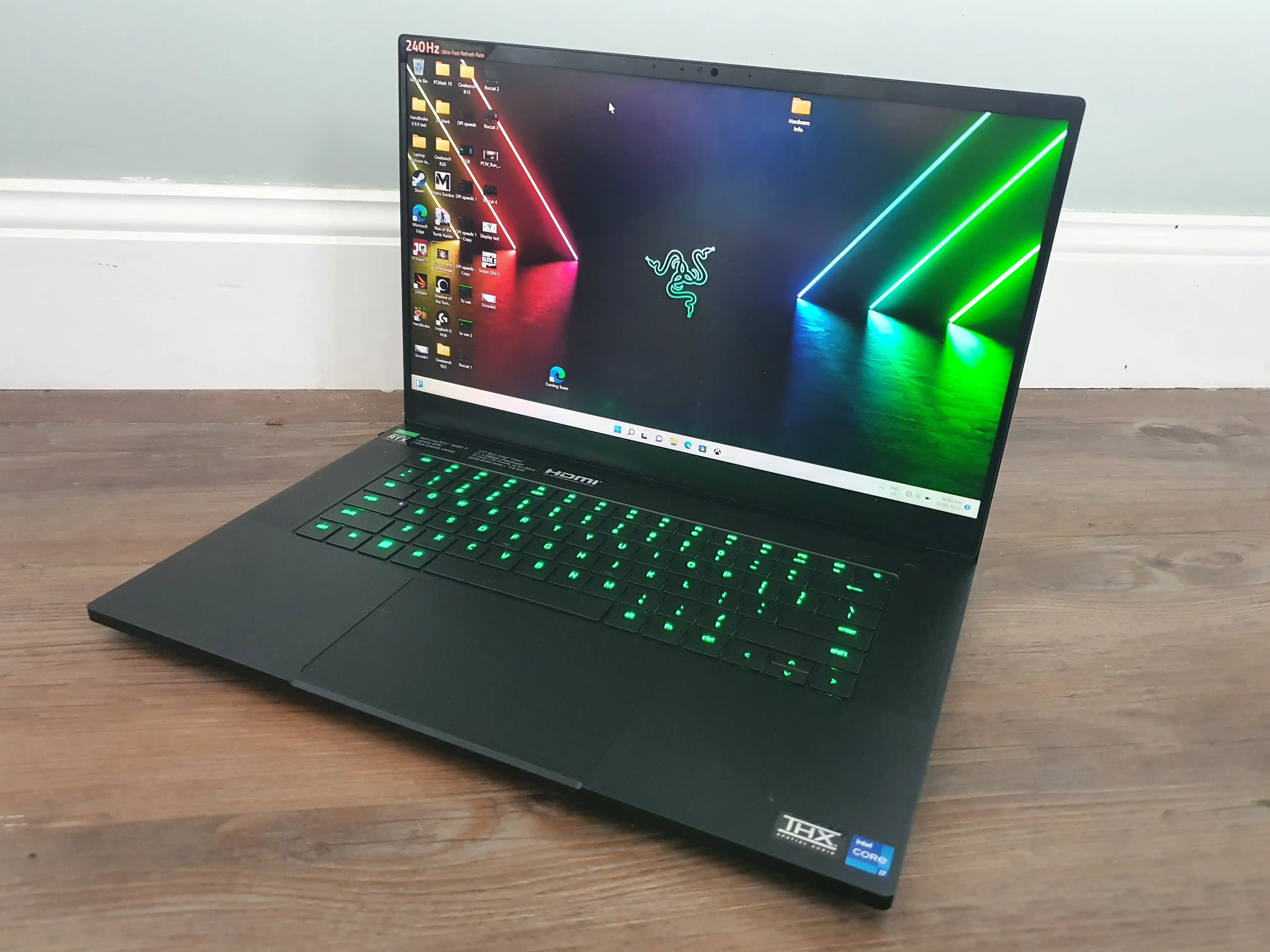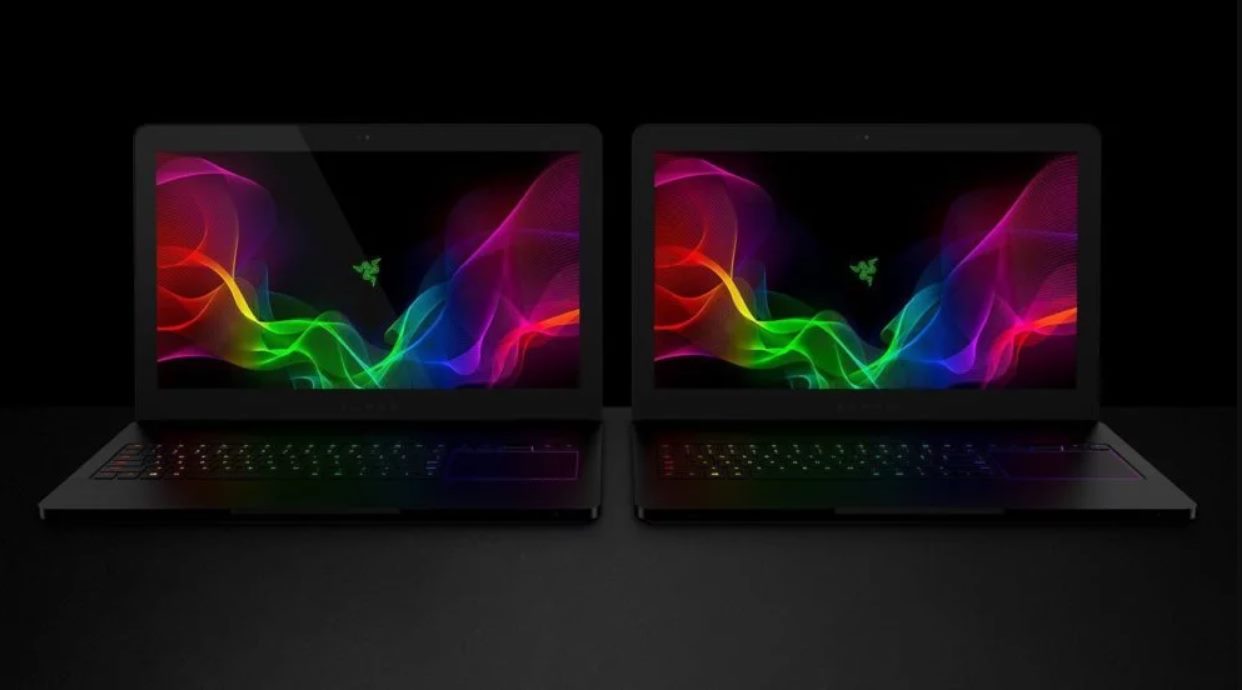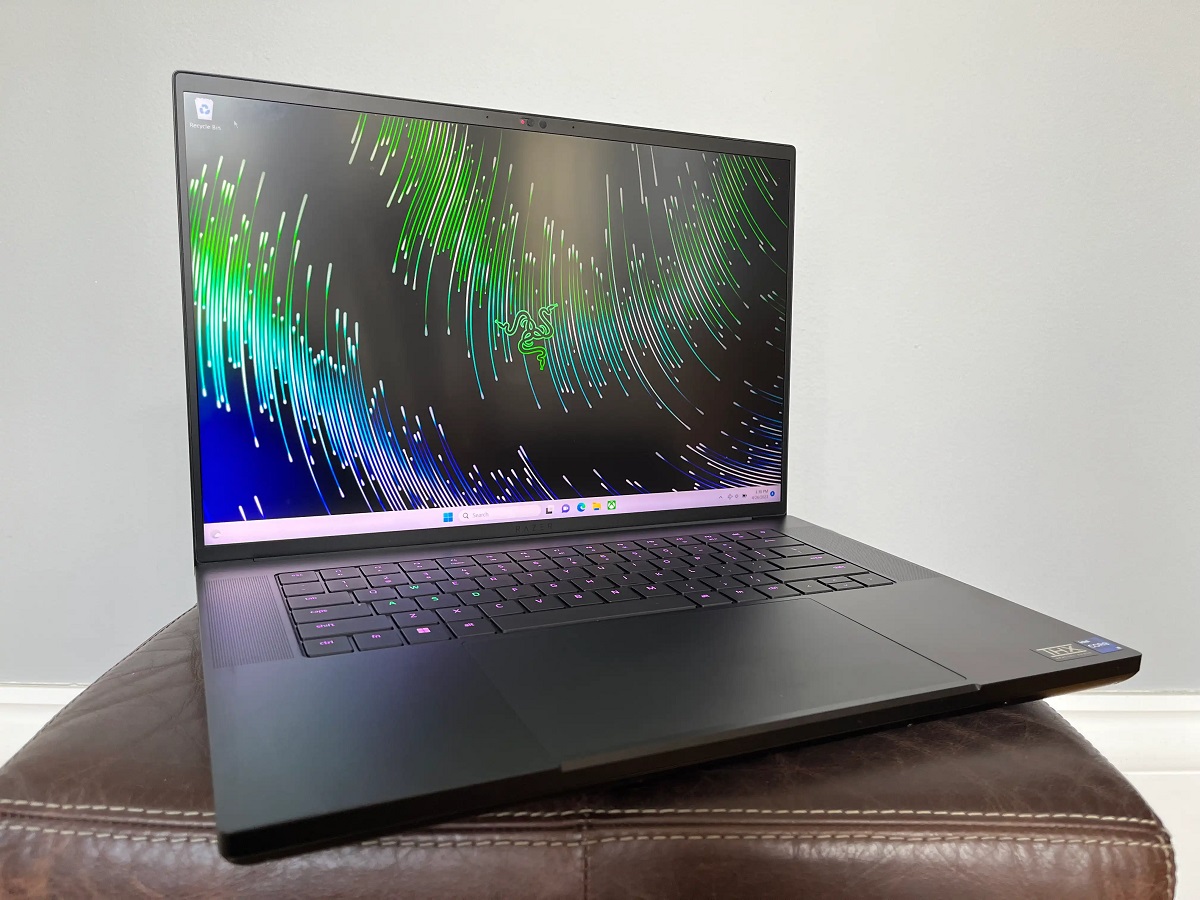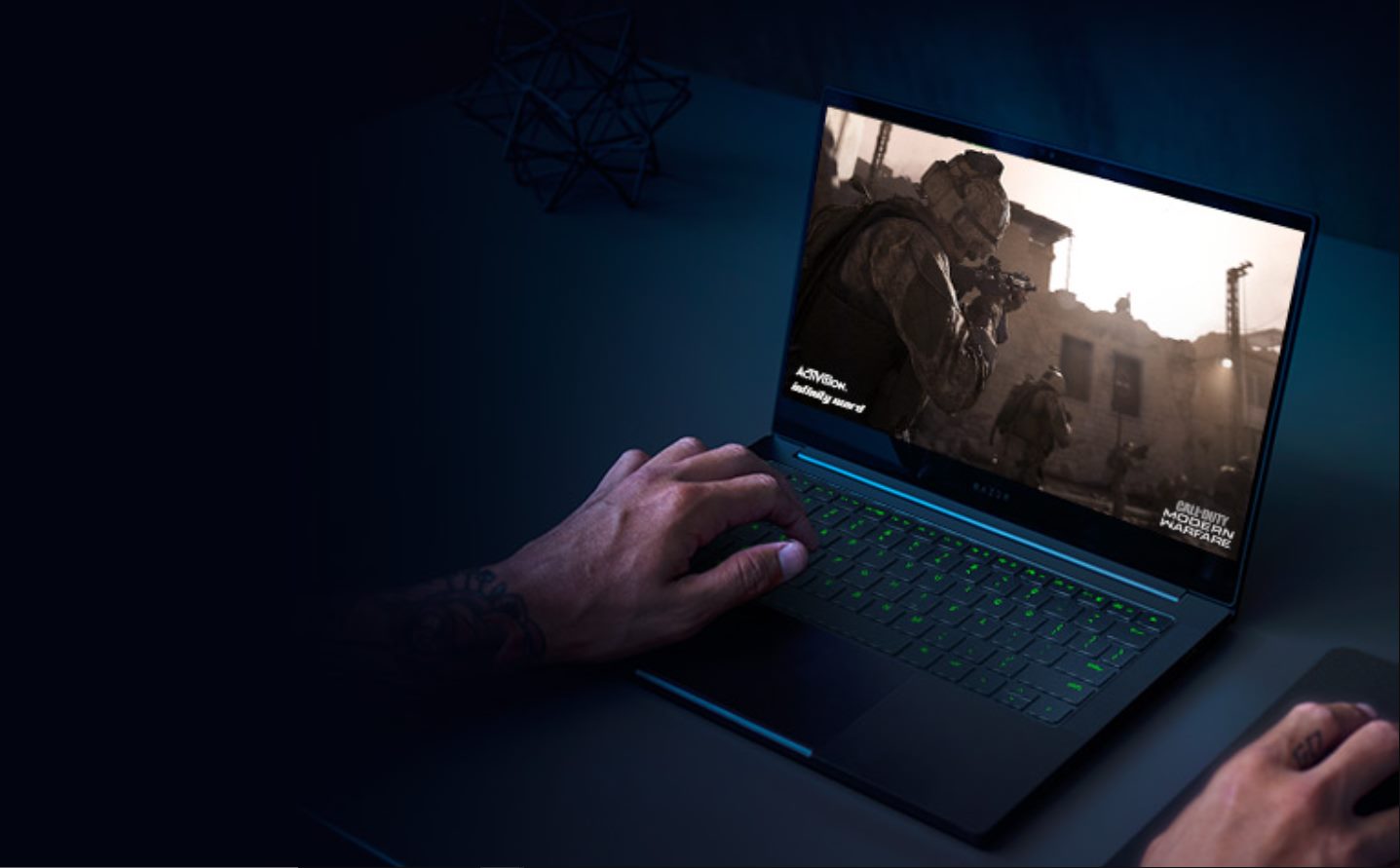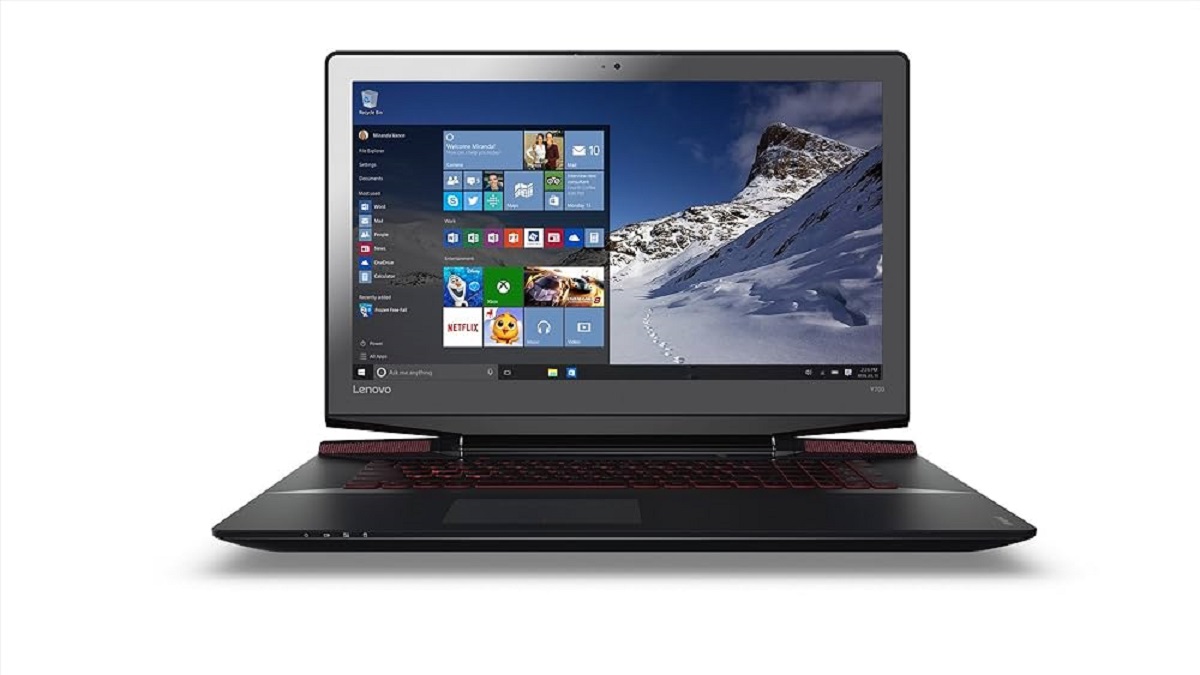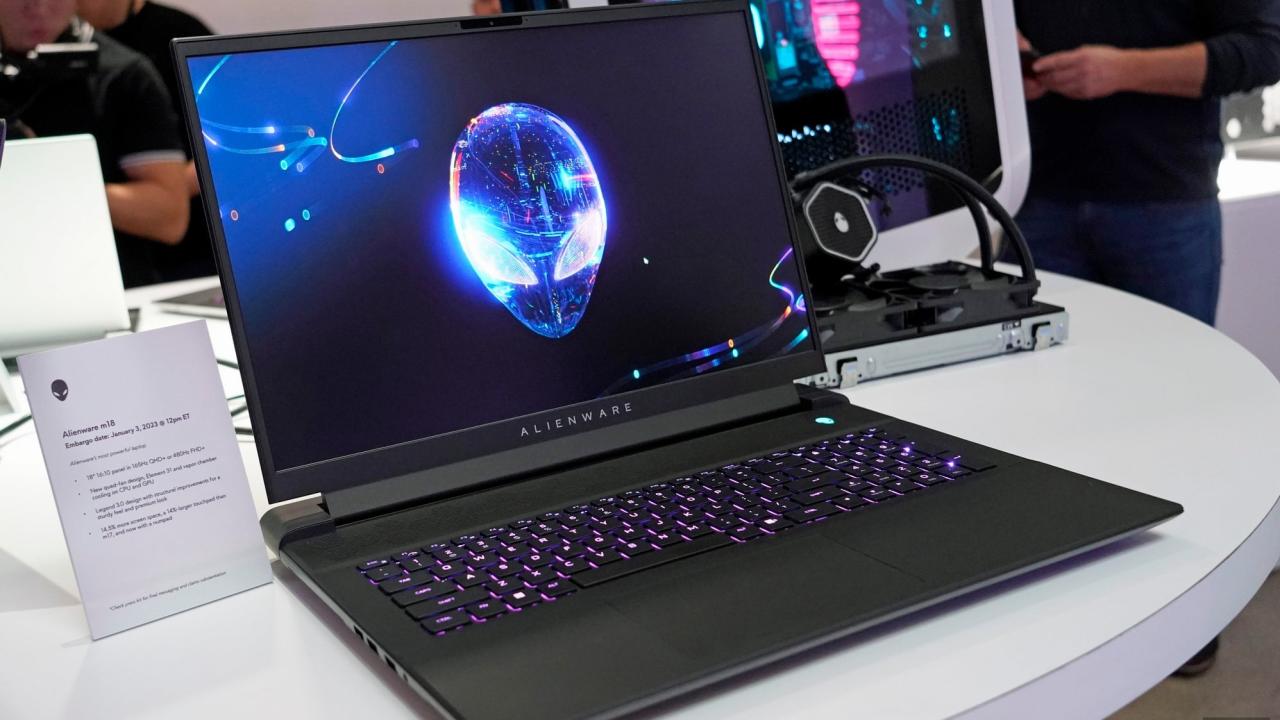Introduction
When it comes to gaming laptops, one of the key factors that enthusiasts consider is the graphics performance. The ability to play games at their highest settings, with stunning visuals and smooth gameplay, is what makes gaming laptops so appealing. However, there is one aspect that often gets overlooked – the impact of running graphics on the laptop’s battery life.
Using the graphics on max settings can drain the battery significantly faster compared to lower settings or when not gaming. This is because running games and other graphically intensive applications consumes a significant amount of power from the battery. While gaming on a fully charged laptop plugged into a power source is ideal, there are times when you may want to play games on battery power, such as during long flights or when an outlet is not available.
In this article, we will explore how using graphics on max settings can affect the battery life of a gaming laptop. We will provide tips and techniques to minimize the impact and maximize battery performance while still enjoying the visual splendor of your favorite games.
So, if you’re a gaming enthusiast who wants to strike a balance between immersive gaming experiences and optimal battery life, read on to discover the strategies to achieve the best of both worlds!
Graphic Settings on Max
When you crank up the graphic settings to the maximum on your gaming laptop, you are immersing yourself in a visually breathtaking gaming experience. The stunning details and lifelike visuals can truly enhance your gameplay and make it more enjoyable. However, it’s important to understand the implications of running graphics on max settings, especially when it comes to your laptop’s battery life.
Running graphics on max settings puts a considerable strain on your laptop’s hardware, especially the GPU (Graphics Processing Unit). This results in higher power consumption, causing your laptop’s battery to drain faster. The more demanding the game or application, the more power it will require to maintain smooth gameplay with maximum graphics settings.
In addition to power consumption, running graphics on max settings can also generate more heat. As the GPU works harder to render complex visuals, it generates more heat, which can impact overall system performance and potentially lead to thermal throttling. This can further affect battery life as the laptop tries to manage the increased heat and power requirements.
While running games on max settings is undoubtedly visually impressive, it’s essential to consider the trade-offs. If you prioritize graphics over battery life, then by all means, go ahead and enjoy the highest settings. However, if you need your gaming sessions to last longer on battery power, it’s worth exploring some alternatives.
In the next sections, we will discuss some tips and techniques to help you optimize your gaming laptop’s battery life while still enjoying excellent graphics performance. So, let’s dive in!
How Graphics Impact Battery Life
Graphics play a crucial role in shaping our gaming experiences, but the stunning visuals come at a cost – battery life. The graphics processing unit (GPU) is responsible for rendering and displaying images on your gaming laptop screen. The more complex and detailed the graphics, the more power the GPU requires.
When you run graphically demanding games or applications on your laptop, the GPU works at full throttle, consuming a significant amount of power from the battery. This increased power draw not only drains the battery faster but also generates more heat, which further affects battery performance.
Furthermore, high graphics settings often require the GPU to constantly process and render more frames per second (FPS). This high frame rate not only puts additional strain on the GPU but also results in a higher power draw, contributing to faster battery drain.
Additionally, modern games utilize advanced rendering techniques like anti-aliasing, ambient occlusion, and real-time ray tracing, which enhance the visual quality but also demand more computation power from the GPU. As a result, the GPU works harder and consumes more power, resulting in a shorter battery life.
It’s important to note that the impact of graphics on battery life can vary depending on various factors, including the game or application being run, the specific graphics settings chosen, and the efficiency of your laptop’s GPU. Some games may be more optimized for power efficiency, while others may be more demanding.
While it’s enticing to play games with impressive graphics, it’s essential to assess your priorities and make conscious decisions about the graphics settings you choose. If battery life is a concern for you, you may want to consider adjusting the graphics settings to balance performance and power consumption.
In the next sections, we will discuss various tips and techniques to help you manage and optimize your laptop’s graphics settings to improve battery life without sacrificing too much of the visual experience. So, let’s explore how you can strike the right balance!
Tips for Using Graphics on Battery
Using graphics on battery power doesn’t have to be a compromise between performance and battery life. With some careful adjustments and considerations, you can still enjoy visually stunning games while maximizing your laptop’s battery performance. Here are some tips to help you make the most out of your gaming experience on battery:
- Lower the graphics settings: One of the most effective ways to improve battery life is by reducing the graphics settings in games. Lowering settings such as resolution, texture quality, shadows, and anti-aliasing can significantly reduce the load on the GPU, resulting in less power consumption.
- Enable power-saving modes: Most gaming laptops come with power-saving options that allow you to optimize performance and power usage. Enable power-saving modes like “Battery Saver” or “Power Saver” to automatically adjust system settings and extend battery life while gaming.
- Limit FPS: Setting a cap on the frame rate (FPS) can help control power consumption. By limiting it to a reasonable range, you can still achieve smooth gameplay while minimizing power usage. Ideally, select a frame rate that matches the refresh rate of your laptop’s screen.
- Close unnecessary background processes: Before starting a gaming session on battery power, make sure to close any unnecessary applications and processes running in the background. These extra tasks consume system resources and can have a negative impact on both performance and battery life.
- Monitor system temperature: Keeping an eye on your laptop’s temperature is crucial when gaming on battery. Excessive heat can cause the system to throttle performance and drain the battery faster. Consider using temperature monitoring software and use cooling pads or external fans to help dissipate heat more efficiently.
- Optimize in-game settings: Each game has its own set of graphics options that can be adjusted for optimal performance. Experiment with different settings to find the right balance between visuals and battery life. Some games may even have a “battery saving” mode that automatically adjusts settings for maximum efficiency.
By implementing these tips, you can make significant improvements to your laptop’s battery life while still enjoying visually appealing games. Remember, finding the right balance between performance and power consumption is key when gaming on battery power.
In the next sections, we will explore additional techniques to further optimize your battery performance while running graphics on your gaming laptop. So, let’s continue our journey toward better battery efficiency!
Adjusting Graphics Settings for Better Battery Performance
When it comes to gaming on battery power, adjusting the graphics settings is essential to optimize both performance and battery life. By fine-tuning these settings, you can strike a balance between visual quality and power consumption. Here are some key considerations for adjusting graphics settings:
- Resolution: Lowering the resolution can have a significant impact on battery performance. Higher resolutions require more GPU power to render the game, resulting in increased power consumption. Consider reducing the resolution to a lower value that still provides an acceptable level of visual quality.
- Texture and Shadow Quality: High-quality textures and shadows may enhance the visual experience, but they also demand more GPU power. Experiment with lowering these settings to reduce the load on the GPU and save battery power. Striking a balance between visual fidelity and battery life is crucial.
- Anti-Aliasing and Ambient Occlusion: Anti-aliasing and ambient occlusion are advanced graphical techniques that can significantly improve image quality but come at a cost. Consider lowering or disabling these settings to reduce GPU workload and conserve battery power.
- Effects and Lighting: Effects and lighting settings, such as reflections, bloom, and dynamic lighting, can have a considerable impact on both GPU and battery performance. Adjust these settings to find a compromise between visual appeal and power efficiency.
- View Distance and Draw Distance: Having a vast view or draw distance in games allows you to see more of the game world, but it also puts additional strain on the GPU. Consider reducing these settings to lessen the GPU’s workload and conserve battery power.
Each game may have different options and names for these settings, so take the time to explore the graphics settings menu and experiment with different configurations. It’s worth noting that not all games offer the same level of flexibility in adjusting graphics settings. However, by making strategic adjustments where available, you can still achieve a noticeable improvement in battery performance.
In addition to adjusting these settings within games, many gaming laptops come with dedicated software that allows you to further optimize graphics performance. These tools often provide presets or customizable profiles specifically designed for improved battery efficiency. Make use of these tools to fine-tune your laptop’s graphics settings and maximize battery performance.
With careful consideration and a bit of experimentation, you can find the sweet spot that delivers a satisfactory gaming experience while conserving battery life. In the next sections, we will explore more strategies to optimize your laptop’s power consumption and extend battery life while gaming. So, let’s continue our quest for better battery performance!
Utilizing Power Saving Features on the Laptop
Gaming laptops often come equipped with various power-saving features that can help you optimize battery performance while running graphics-intensive applications. These features allow you to minimize power consumption without compromising too much on performance. Here are some power-saving features to consider utilizing:
- Battery Saver Mode: Most operating systems offer a built-in battery saver mode that adjusts system settings to conserve battery power. Enabling this mode can limit background processes, optimize power usage, and extend battery life while you game.
- Processor Management: Adjusting the processor’s power management settings can have a significant impact on power consumption. Options like Intel’s SpeedStep or AMD’s Cool’n’Quiet can dynamically lower the processor’s clock speed when not under heavy load, reducing power draw.
- Graphics Control Panel: Many laptops have dedicated graphics control panels, such as NVIDIA Control Panel or AMD Radeon Software, that allow you to customize graphics settings and optimize power consumption. Explore these control panels to find power-saving options tailored to your specific GPU.
- Keyboard Backlight: Keyboard backlighting can be visually appealing, but it also consumes additional power. Consider reducing the brightness of the keyboard backlight or disabling it altogether when gaming on battery power.
- Wireless Connectivity: Disabling Wi-Fi and Bluetooth when not needed can help conserve battery power. Since gaming doesn’t typically require constant internet connectivity, turning off wireless connections can minimize power drain and maximize battery life.
- Screen Brightness: Lowering the screen brightness can have a significant impact on battery performance. Adjusting it to a comfortable level that still allows for an enjoyable gaming experience can help extend battery life while gaming on battery power.
Don’t forget to explore your laptop’s power management settings as well. Many laptops provide customizable power plans that allow you to adjust various settings to balance performance and battery life. These settings include parameters like display timeout, sleep timers, and hard drive power management.
Remember, utilizing these power-saving features not only helps conserve battery power but also contributes to a cooler operating temperature on your laptop. Lower temperatures can enhance overall system stability and longevity.
By taking advantage of these power-saving features and making thoughtful adjustments, you can significantly improve your laptop’s battery performance while gaming on battery power. However, optimizing power consumption is just one part of the equation. In the next and final section, we will discuss how to monitor and optimize your laptop’s battery performance to ensure you make the most out of your gaming sessions. So, let’s dive into the last section!
Monitoring and Optimizing Battery Performance
Monitoring and optimizing battery performance is key to getting the most out of your gaming sessions on a laptop. By keeping an eye on battery usage and implementing effective strategies, you can prolong battery life and ensure a smooth gaming experience. Here are some essential tips to help you monitor and optimize your laptop’s battery performance:
- Battery Monitoring Software: Many gaming laptops come with built-in battery monitoring software that provides real-time information on battery usage. Install and utilize these tools to keep track of your battery’s health, current charge level, and power consumption.
- Battery Calibration: Regularly calibrating your laptop’s battery can help improve accuracy in reporting battery charge levels. Follow the manufacturer’s instructions or use third-party calibration tools to ensure your battery’s performance is optimized.
- Close Unnecessary Background Apps: Closing any unnecessary programs running in the background can help reduce CPU and GPU usage, resulting in lower power consumption. Ensure that only gaming-related applications are running during your gaming sessions.
- Manage Startup Programs: Adjusting which programs launch automatically when you start your laptop can help reduce unnecessary power consumption. Disable any startup programs that are not essential for your gaming sessions.
- Avoid Overcharging: Overcharging your laptop’s battery can degrade its performance over time. Disconnect the power source after the battery reaches a full charge to maintain optimal battery health.
- Regularly Clean Your Laptop: Dust and debris can accumulate in your laptop’s cooling system, impeding airflow and causing the system to work harder, resulting in increased power consumption. Regularly clean your laptop’s vents and fans to keep the system running cool.
- Keep Your Laptop Cool: Operating your laptop in a cool environment or using a laptop cooling pad can help prevent excessive heat buildup. Excessive heat not only affects performance but also results in higher power consumption.
- Utilize Power Management Plans: Take advantage of the power management plans available on your laptop to optimize performance and battery life. Customize these plans to suit your gaming preferences and power-saving needs.
By incorporating these monitoring and optimization techniques into your gaming routine, you can ensure that your laptop’s battery performance remains optimal. Regularly assessing and adjusting your power settings and implementing good practices will help you extend battery life and enjoy uninterrupted gaming sessions.
Remember, each gaming laptop may have unique power settings and features, so consult your laptop’s user guide or manufacturer’s website for more specific information. By taking proactive steps to monitor and optimize battery performance, you can make the most out of your gaming sessions on a laptop.
Now that we have explored various strategies for maximizing battery performance, it’s time to put them into action. Implement these tips and techniques to strike a balance between a visually immersive gaming experience and efficient battery usage. Happy gaming!
Conclusion
Gaming on a laptop can be a thrilling experience, but it’s important to consider the impact of graphics on battery life. Running graphics on max settings can significantly drain your laptop’s battery, requiring careful management to strike a balance between immersive visuals and extended gaming sessions.
In this article, we explored the implications of running graphics on max settings and provided tips and techniques to optimize battery performance while still enjoying visually stunning games. We discussed the importance of adjusting graphics settings, utilizing power-saving features, and monitoring battery performance.
By lowering graphics settings, enabling power-saving modes, and optimizing in-game configurations, you can significantly enhance battery life. Additionally, making use of power-saving features on your laptop, such as processor management and adjusting screen brightness, can further maximize battery efficiency.
Monitoring battery performance and implementing strategies like closing unnecessary background apps, managing startup programs, and regularly cleaning your laptop can help maintain optimal battery health and extend its lifespan.
Remember, it’s essential to find the right balance between performance and power consumption when gaming on battery power. Prioritize your gaming preferences and power-saving goals to create a customized experience that caters to your needs.
Ultimately, by implementing the tips and techniques discussed in this article, you can enjoy visually immersive gaming while still maximizing your laptop’s battery life. So, go ahead, dive into your favorite games, and game on – all while optimizing your battery usage!







